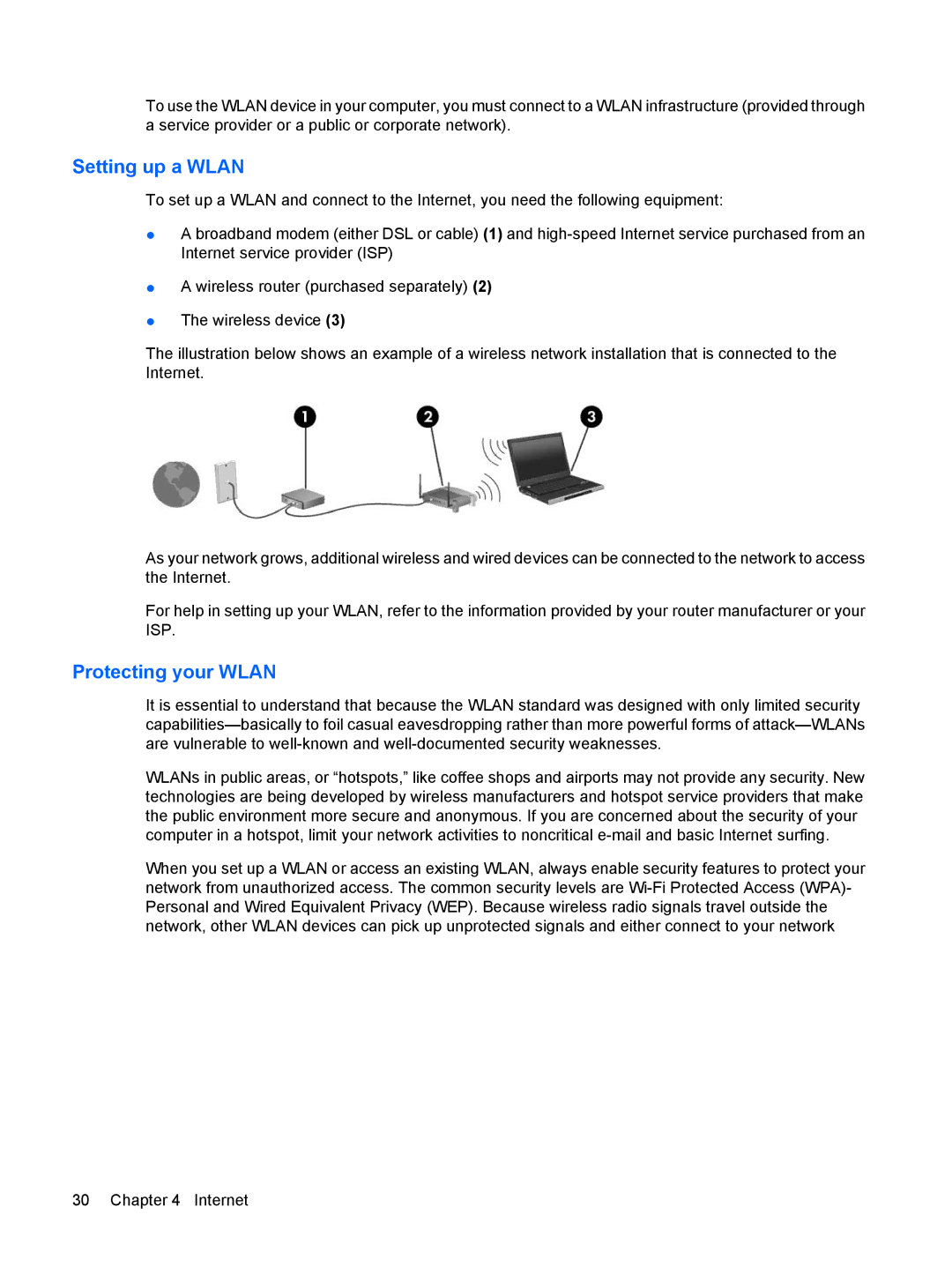
To use the WLAN device in your computer, you must connect to a WLAN infrastructure (provided through a service provider or a public or corporate network).
Setting up a WLAN
To set up a WLAN and connect to the Internet, you need the following equipment:
●A broadband modem (either DSL or cable) (1) and
●A wireless router (purchased separately) (2)
●The wireless device (3)
The illustration below shows an example of a wireless network installation that is connected to the Internet.
As your network grows, additional wireless and wired devices can be connected to the network to access the Internet.
For help in setting up your WLAN, refer to the information provided by your router manufacturer or your ISP.
Protecting your WLAN
It is essential to understand that because the WLAN standard was designed with only limited security
WLANs in public areas, or “hotspots,” like coffee shops and airports may not provide any security. New technologies are being developed by wireless manufacturers and hotspot service providers that make the public environment more secure and anonymous. If you are concerned about the security of your computer in a hotspot, limit your network activities to noncritical
When you set up a WLAN or access an existing WLAN, always enable security features to protect your network from unauthorized access. The common security levels are
30 Chapter 4 Internet
